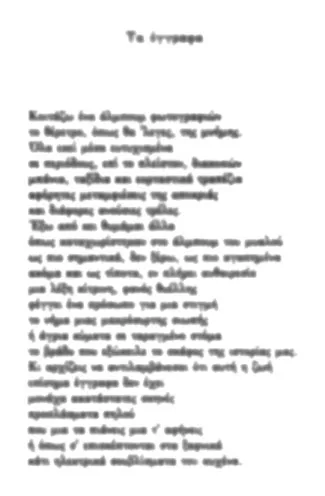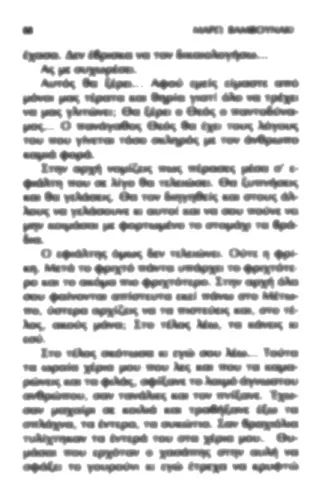
eBook - ePub
Verse
An Introduction to Prosody
Charles O. Hartman
This is a test
Compartir libro
- English
- ePUB (apto para móviles)
- Disponible en iOS y Android
eBook - ePub
Verse
An Introduction to Prosody
Charles O. Hartman
Detalles del libro
Vista previa del libro
Índice
Citas
Información del libro
Verse is a seminal introduction to prosody for any student learning to read or write poetry, from secondary to graduate school.
- Discusses iambic pentameter and other kinds of metrical verse, scansion, rhythm and rhyme, free verse, song, and advanced topics such as poetic meter, linguistic approaches to verse, and the computer scansion of metrical poetry
- Written in a clear, engaging style by a poet and teacher with more than 30 years of experience teaching the subject
- Supplemented by a user-friendly website with student exercises and additional resources
Preguntas frecuentes
¿Cómo cancelo mi suscripción?
¿Cómo descargo los libros?
Por el momento, todos nuestros libros ePub adaptables a dispositivos móviles se pueden descargar a través de la aplicación. La mayor parte de nuestros PDF también se puede descargar y ya estamos trabajando para que el resto también sea descargable. Obtén más información aquí.
¿En qué se diferencian los planes de precios?
Ambos planes te permiten acceder por completo a la biblioteca y a todas las funciones de Perlego. Las únicas diferencias son el precio y el período de suscripción: con el plan anual ahorrarás en torno a un 30 % en comparación con 12 meses de un plan mensual.
¿Qué es Perlego?
Somos un servicio de suscripción de libros de texto en línea que te permite acceder a toda una biblioteca en línea por menos de lo que cuesta un libro al mes. Con más de un millón de libros sobre más de 1000 categorías, ¡tenemos todo lo que necesitas! Obtén más información aquí.
¿Perlego ofrece la función de texto a voz?
Busca el símbolo de lectura en voz alta en tu próximo libro para ver si puedes escucharlo. La herramienta de lectura en voz alta lee el texto en voz alta por ti, resaltando el texto a medida que se lee. Puedes pausarla, acelerarla y ralentizarla. Obtén más información aquí.
¿Es Verse un PDF/ePUB en línea?
Sí, puedes acceder a Verse de Charles O. Hartman en formato PDF o ePUB, así como a otros libros populares de Literature y Literary Criticism in Poetry. Tenemos más de un millón de libros disponibles en nuestro catálogo para que explores.
Información
1
The Iambic Pentameter Line
This book is about verse: the form of written language most often used for poems.
“Verse” refers to a channel, a medium, not to the content or value of the writing it carries. “Poetry” is a different kind of term, more fluid and value-laden – “sheer poetry,” “poetry in motion.” “Poetry” has no opposite. But verse is so clearly opposed to prose that you can see the difference from across the room:
some verse | some prose |
For centuries there has been a close association between verse and poetry. Though prose-poems exist and though some print forms like advertisements show the kind of attention to line breaks that poets pay to them, generally when we see a page like the one on the left we’re sure that a poem waits to be read.
The polarity between verse and prose looks so simple as to be bald and bland. But it turns out to be freighted with meaning for poems. Poems use verse because verse is language in lines. Prose is in lines too, of course (unless it’s printed sideways on a very long tape), but the breaks between lines don’t mean anything. They’re just the places where the text is cut up to fit into the page-box. Verse is verse because every line and line break represents a decision by the writer. Poems use verse because poetry, whatever else it may be, does its work by being a tissue of decisions about language. When we read a poem we retrace the poet’s path (often without thinking about it) and mimic those decisions within ourselves. Grouping words into lines and dividing the lines carefully turn out to be powerful ways to focus the reader’s attention. They contribute to the reader’s understanding whether the understanding happens consciously or not.
Verse can be made up of either metrical or nonmetrical lines. In English, for most of the past thousand years until about World War I, poems almost always used some type of meter to organize their lines, and we’ll begin with metrical verse. (This will help us make sense of “free verse” in Chapter 4.) The dominant kind of metrical line in English poetry has long been what is called the iambic pentameter. We’ll work out formal definitions soon, but it’s more important to hear the tune or movement of the line. Here are two iambic pentameters, both from sonnets by William Shakespeare (1564–1616). Read them out loud – this will be an important step throughout this book:
If thou survive my well-contented day …
So long as men can breathe or eyes can see …
So long as men can breathe or eyes can see …
Let’s consider some differences between these two lines before we get to what they have in common. The first line begins by focusing on the charged verb “survive.” Then it pauses momentarily, then gathers itself even more tightly around the polysyllabic compound “well-contented.” (Shakespeare made up this word, which adds to the line’s intensity: if we imagine him speaking the line, we see him having to reach for new language, like a singer reaching for a note almost out of range.) The second line consists entirely of monosyllables and spreads emphasis fairly evenly among the five main words, “long,” “men,” “breathe,” “eyes,” and “see.” Again there’s a small pause (it sets up a balance between the verbs “breathe” and “see,” with their shared vowel sound), but this time it comes just after the midpoint of the line rather than just before it. These are a few of the ways in which the two lines move or unfold differently. (You can find more.) Within the small, concentrated space of a single line words can speed up and slow down and group themselves in a wide variety of ways. To sum all this up in a single word, the two lines differ in rhythm.
Syllables
The terms "monosyllable" and "polysyllable" assume that we’re always sure how many syllables a word has. That’s not quite true. People from different parts of the English-speaking world may hear words like “fire” and “hour” as having either one syllable or two. How many syllables does “comfortable” have? Or “towards”? In practice, as we’ll see, it’s unusual for these uncertainties to make any important difference in the metrical workings of a line. Notice and enjoy the variety English offers, but don’t be anxious about it. When in doubt trust your dictionary, which always gives the syllabification of a word.
Here are two more lines in iambic pentameter, one by Sir Philip Sidney (1554–1586), the other by Theodore Roethke (1908–1963). Again begin by reading them aloud:
Desiring nought but how to kill desire …
I hear my being dance from ear to ear. …
I hear my being dance from ear to ear. …
Listen, as before, for how rhythmic variations in the speed and groupings of words and in the position and strength of the pauses combine to give each line its own “tune.” Both lines are organized around repetitions, but the repetitions have different effects on the movement of the line. Sidney begins and ends with forms of the word “desire.” (This is the final line of a poem about being trapped by one’s own desire.) Roethke, in contrast, repeats “ear,” which echoes “hear” at the beginning. In the ballroom in his head all those long e sounds (including “being”) gambol around the different resonance of “dance.” Though we might think of the rhythm in both lines as somehow symmetrical, the symmetry feels like imprisonment in Sidney’s line but celebration in Roethke’s.
All of these variations may be subtler than any we’re routinely conscious of hearing in speech – though we hear a lot more than we’re conscious of. Part of a poem’s business is to make us more aware of the sound and movement of what we speak.
Rhythm and Meter
We’ve been listening to differences, but what do these four lines of verse have in common? They’re all ten syllables long and the even-numbered syllables are all stronger or louder or more intense than the odd-numbered ones. You may have been aware of these similarities in the lines when you spoke them aloud. (If not, listen to them again.) This common ground is the meter. Here’s a way to make it visible, using ‘/’ for the stronger syllables, ‘x’ for the weaker syllables, and a plain vertical bar to demarcate the repeated units:
x / | x / | x / | x / | x /If thou survive my well-contented day … (Shakespeare)x / | x / | x / | x / | x /So long as men can breathe or eyes can see … (Shakespeare)x /|x / | x / | x / | x /Desiring nought but how to kill desire … (Sidney)x / | x / | x / | x / | x /I hear my being dance from ear to ear. … (Roethke)
The row of marks above each line is a scansion of the line.
Learning how to scan iambic pentameter is the goal for this chapter, and the skills this involves underlie everything later in the book as well. In fact the scansion itself is much less the point than the kind of detailed listening that scansion requires. Scansion is just a system of notation, but using it encourages us to apply a close awareness that helps connect t...